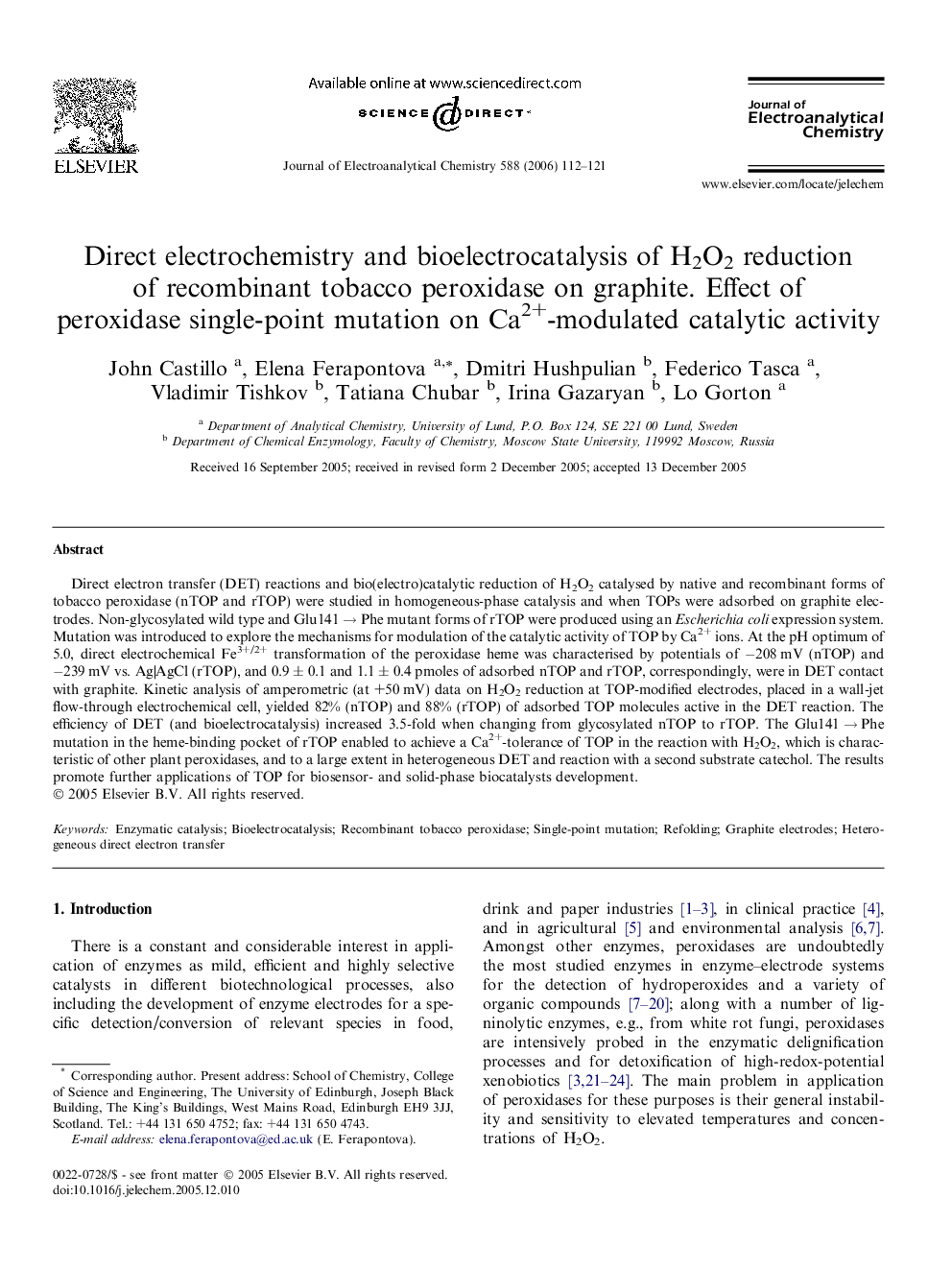| Article ID | Journal | Published Year | Pages | File Type |
|---|---|---|---|---|
| 221448 | Journal of Electroanalytical Chemistry | 2006 | 10 Pages |
Direct electron transfer (DET) reactions and bio(electro)catalytic reduction of H2O2 catalysed by native and recombinant forms of tobacco peroxidase (nTOP and rTOP) were studied in homogeneous-phase catalysis and when TOPs were adsorbed on graphite electrodes. Non-glycosylated wild type and Glu141 → Phe mutant forms of rTOP were produced using an Escherichia coli expression system. Mutation was introduced to explore the mechanisms for modulation of the catalytic activity of TOP by Ca2+ ions. At the pH optimum of 5.0, direct electrochemical Fe3+/2+ transformation of the peroxidase heme was characterised by potentials of −208 mV (nTOP) and −239 mV vs. Ag|AgCl (rTOP), and 0.9 ± 0.1 and 1.1 ± 0.4 pmoles of adsorbed nTOP and rTOP, correspondingly, were in DET contact with graphite. Kinetic analysis of amperometric (at +50 mV) data on H2O2 reduction at TOP-modified electrodes, placed in a wall-jet flow-through electrochemical cell, yielded 82% (nTOP) and 88% (rTOP) of adsorbed TOP molecules active in the DET reaction. The efficiency of DET (and bioelectrocatalysis) increased 3.5-fold when changing from glycosylated nTOP to rTOP. The Glu141 → Phe mutation in the heme-binding pocket of rTOP enabled to achieve a Ca2+-tolerance of TOP in the reaction with H2O2, which is characteristic of other plant peroxidases, and to a large extent in heterogeneous DET and reaction with a second substrate catechol. The results promote further applications of TOP for biosensor- and solid-phase biocatalysts development.
